When the oceans rise, and the smog crowds the city streets like an alien invader, we might ask ourselves: are the end times here? It may be tempting to commence construction on a doomsday bunker. However, the days past reckoning are not imminent if we meaningfully change our lifestyles.
Unfortunately, this may entail cutting back on air travel. (According to the IEA, this accounts for over 2% of global CO2 emissions.) But that doesn’t mean eliminating trips abroad altogether. Experiencing different countries is fun, educational and can raise your appreciation for the natural world’s beauty. So on your next foray abroad, here are some destination and travel recommendations to minimize your touristic impact.
Hasta la vista, baby.
Costa Rica
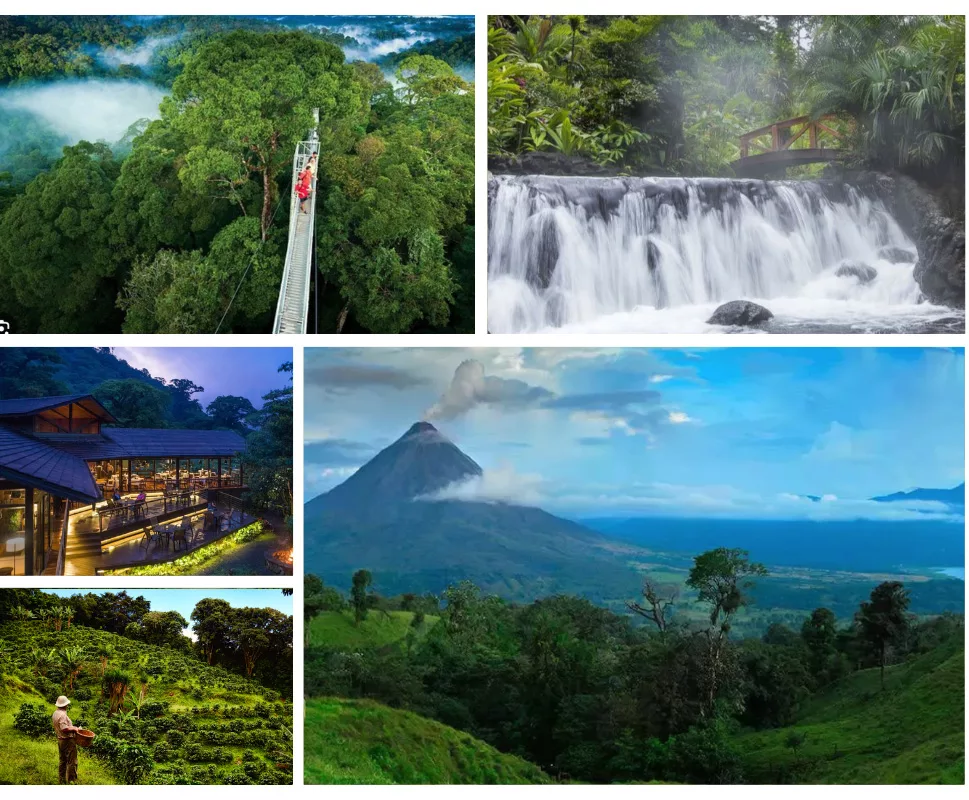
Costa Rica, a nation famed for biodiversity, has climate change at the top of its legislative agenda. This small country has 6% of the world’s biodiversity, and 25% of its land is preserved according to national law.
Zipline through Monteverde Cloud Forest
The Monteverde Cloud Forest preserve is one of Costa Rica’s seven wonders. It has played an essential role in the country’s development as an ecotourism destination. It’s easy to see why National Geographic has declared the “Green Mountain” the “jewel in the crown of cloud forests.” Tourists who aim to travel green cannot think of a more apt place to start. Try trekking on walkways built in the canopy of trees, venturing through a butterfly garden, or getting the closest to a human version of flight on a zip line.
Stay at El Silencio Lodge & Spa
Don’t be ashamed to have your head in the clouds. Instead, embrace the feeling through your stay at El Silencio, a lodge and spa in a private 500-acre tropical cloud forest reserve. Located two hours north of San Jose by car, El Silencio is in a small village, Bajos Del Toro. This rural retreat from the hustle and bustle of big city life has a “plant a tree” program that allows guests to offset carbon emissions. The hotel also features numerous activities, from horseback riding in Bajo Del Toro to rum-tasting internationally acclaimed Ron Centenario and exploring private waterfall trails.
Take a Personalized Tour
ARA Tours is perfect for those seeking a more profound insight into Mother Nature. The service possesses the coveted Certification for Sustainable Tourism (CST) certification, a metric that ensures compliance with environmental regulations.
Sip Coffee at Cafe Monteverde
Did you know that Costa Rica produces over 1.3 million 60 kg bags of green coffee annually? Fuel up for your day at the cloud forest by experiencing the local coffee culture firsthand. Cafe Monteverde is a collective of twenty families who preserve the coffee production process harmoniously with the cloud forest. This has been a tradition since families from Costa Rica’s central valley settled in the region in the 1930s. The collective provides tours and operates the Life Monteverde program, which educates nearly a thousand students about sustainable living yearly.
Relax in the Tabacón Hot Springs
After a long day of exploration, take the time to luxuriate in these naturally-heated thermal springs. The springs are surrounded by verdant, green gardens and have the perfect view of Arenal Volcano, which until 2010 was one of the world’s most active volcanoes and makes for a breathtaking sight for visitors to the springs and nearby national park.
Palau
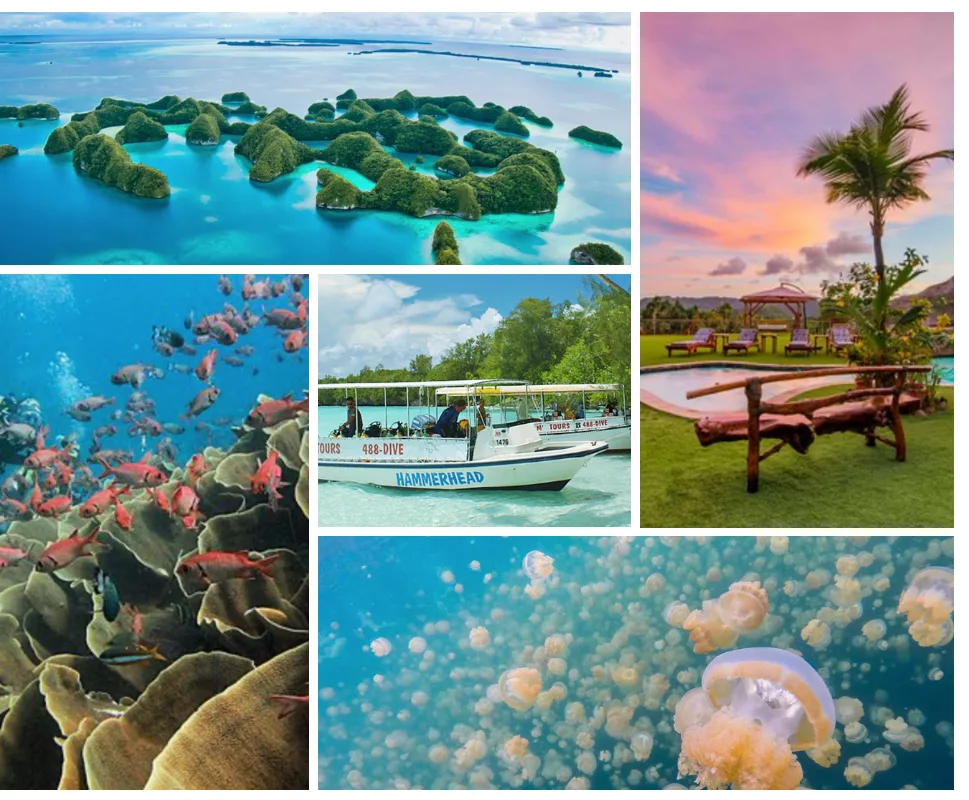
Palau, a lush and tropical archipelago comprising over 500 unique islands, intends to protect the future of its bountiful marine life. The Palau Bureau of Tourism aims to become the world’s first officially carbon-neutral travel destination. To do so, it partnered with Sustainable Travel International and Slow Food organizations and launched a new project dedicated to reducing visitor emissions. The Tourism Bureau also understands the importance of community resilience during climate change and supports female empowerment, food security, and building a circular economy.
Stay at the VIP Guest Hotel
As part of the Palau Business Pledge, VIP Hotel aims to minimize its carbon footprint and educate guests on the importance of environmental protection. This family-run operation is located in the heart of central Koror and features affordable accommodation and easy access to the city’s varied offerings.
Eat at the Penthouse Hotel Restaurant
Demok, which consists of taro leaf, coconut broth, and land crab, was recently declared Palau’s “national soup.” Try this dish and other local food like ‘Sar Ma Cheluch” (a whole fish in a tasty mixture of coconut oil, salt, and green onions) and stuffed crabs at the family-run Penthouse Hotel Restaurant, which sources its ingredients from fishing family members. Eating at local businesses is also a great way to participate in the circular economy. Talk about a fresh catch!
Embark on an Aquatic Adventure
Sam’s Tours offers local guides for kayak, hiking, and dive expeditions for visitors to fully appreciate the beauty of Palau’s waters. The tour service also prioritizes sustainability by rejecting single-use plastics, providing locally sourced lunches, and enforcing environmental rules.
Visit Jellyfish Lake
Jellyfish Lake is a top swimming spot for a good reason – it’s a sight that must be swum to be believed. Located on Eil Malk Island, millions of golden jellyfish migrate across the 12,000-year-old marine lake. Unbelievably, these jellyfish feed on algae and do not sting people, making this once-in-a-lifetime experience possible. A day tour from nearby Koror usually costs between $100-$200 and includes other activities such as snorkeling and kayaking.
Unlock Local Secrets
The Ol’au Palau pledge has ‘gamified’ tourism by rewarding travelers who log sustainable choices in their custom app. If you use reef-safe sunscreen, visit culturally significant sites, and eat sustainably sourced local food, you can unlock exceptional experiences like swimming in a secret cave, fishing in a secluded spot, and taking a unique hike only known by locals.
Ecuador
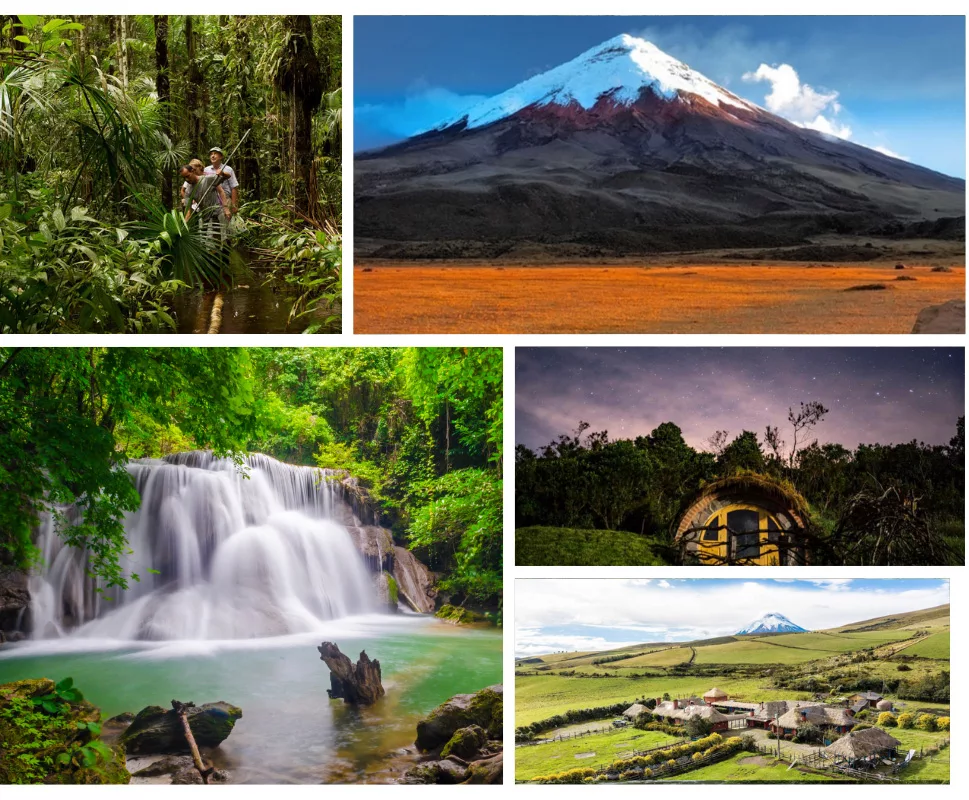
A leader in refining environmental guidelines, Ecuador offers a plentiful reserve of options for your next natural getaway. Besides The Galapagos, a natural park with more opportunities highlighted below, Ecuador also hosts varied options, from rainforests to rivers to volcanoes. That isn’t to forget about the vibrant cultural life in cities like Quito, which features historical and innovative delights.
Ride a train through the Avenue of Volcanoes.
Tren Ecuador, which prides itself on “breaking with the traditional model of luxury train rides,” offers routes through some of the most scenic parts of the country. Iconic volcanoes Pichincha and Cotopaxi are not the only sites you will spot throughout your journey; you will also stop at Cotopaxi National Park to take a guided hike and enjoy a meal at local business Cafe del Tren. The train company also supports community growth and innovation through businesses along the tracks, such as markets, museums, and indigenous dance presentations.
Stay at the Secret Garden Hostel
With two locations and top reviews (rated in the top 1% of accommodations on TripAdvisor), the Secret Garden hostel is a top choice if you plan to visit Ecuador’s capital Quito or active volcano Cotopaxi. In Quito, the hostel is ideally located for visits to nearby museums, cathedrals, and local markets. The hostel also provides walking tours to learn about the diverse culture (Ecuador has a significant indigenous population with 14 groups, including the Kichwa people). The Cotopaxi location has stunning views of the volcano.
Visit Cotopaxi National Park
The park’s highlight is undoubtedly the 5,897-metre behemoth of an active volcano. While visitors cannot currently climb to the summit due to volcanic activity, in our opinion, that contributes to the excitement. The park features many other sights and activities, from camping to bird-watching to horseback riding along wild horses. The food options in the area are also exceptional; if you’re feeling adventurous, you can try the local specialty of Cut (guinea pig.)
Tour the Cuyabeno Wildlife Reserve
Unfortunately, in recent times, human activity has threatened the verdant rainforest environs. Yet ecotourism remains a crucial way to combat deforestation by supporting local indigenous communities who offer tours. The Cuyabeno Wildlife Reserve is a top destination from Quito and one of the most biodiverse places in the world, with 10 species of monkeys, over 350 fish species, over 580 species of birds, and much more.
Witness the Cascada el Pailón
A jaw-dropping waterfall on the edge of the cloud forest, the Cascade el Pailón del Diablo is not to be missed. Take a riveting walk along the suspension bridge, enjoy flora and fauna, and a beautiful light display at night for a blend of nature and art. The waterfall is located in Banos, approximately a three-hour journey from Quito.
The Galapagos
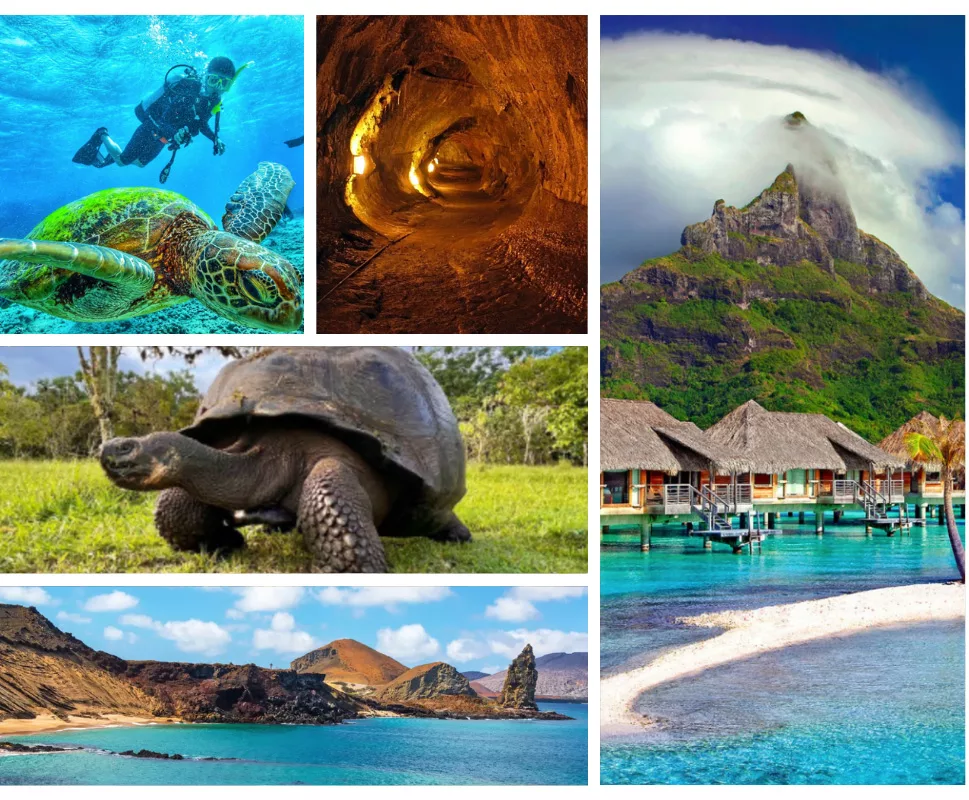
While The Galapagos Islands are part of Ecuador, this national park is deservedly famous in its own right for its natural beauty. Additionally, they have sustainability built into their ecotourism model. Every international tourist visiting The Galapagos must pay a $100 fee, with 40% dedicated to park efforts such as eliminating invasive species and repopulating giant tortoise populations.
Set Sail Aboard the M/C EcoGalaxy
The only ecological catamaran in the Galapagos, the EcoGalaxy Catamaran aims to demonstrate the beauty of the Galapagos to the care of the Galapagos.
Learn to Scuba-dive
A World-Heritage site, the marine reserve is teeming with aquatic life: whales, albatrosses, hammerhead and whale sharks, sea lions, penguins, and sea turtles are among the 2,900 residents of the territory. Beginners can try diving at relaxed locations off Santa Cruz, North Seymour, and Camano Island. However, some breathtaking sites, such as underwater cliffs, are best reserved for more advanced divers.
Eat at the Puerto Ayora Fish Market
Gain insight into the local fishing culture by visiting the fish market, which takes place in the town center of Puerto Ayora on Santa Cruz. Spot red snappers, groupers, yellow-fin tuna, and native Camillo fish before trying the local cuisine – in the evening, the market turns into an outdoor restaurant!
Make friends at the El Chato Tortoise Reserve
Known for their slow and steady natures, the tortoises in the Santa Cruz highlands are an integral part of island life. In fact, the very name of the Galapagos derives from the old Spanish ‘Galapago’ and likely emerged when the Spanish explorers gave the islands their modern-day name. The 29-acre reserve protects the giant turtles, which weigh up to an astounding 902 lbs: a case of island gigantism when isolated species outgrow their mainland counterparts. Rangers must protect this threatened species, so by visiting them, you also support the thriving colony.
Explore the Lava Tunnels
Right next to the El Chato Tortoise Reserve, this Santa Cruz labyrinth results from years of volcanic activity. These lava tunnels are some of the best, but many in the Galapagos are due to the archipelago’s location on a tectonic plate or “hot spot,” where mantle plumes rise to create volcanoes. Lava tunnels are formed when the surface of a lava stream hardens, forming a crust while liquid flows underneath them.
Chile
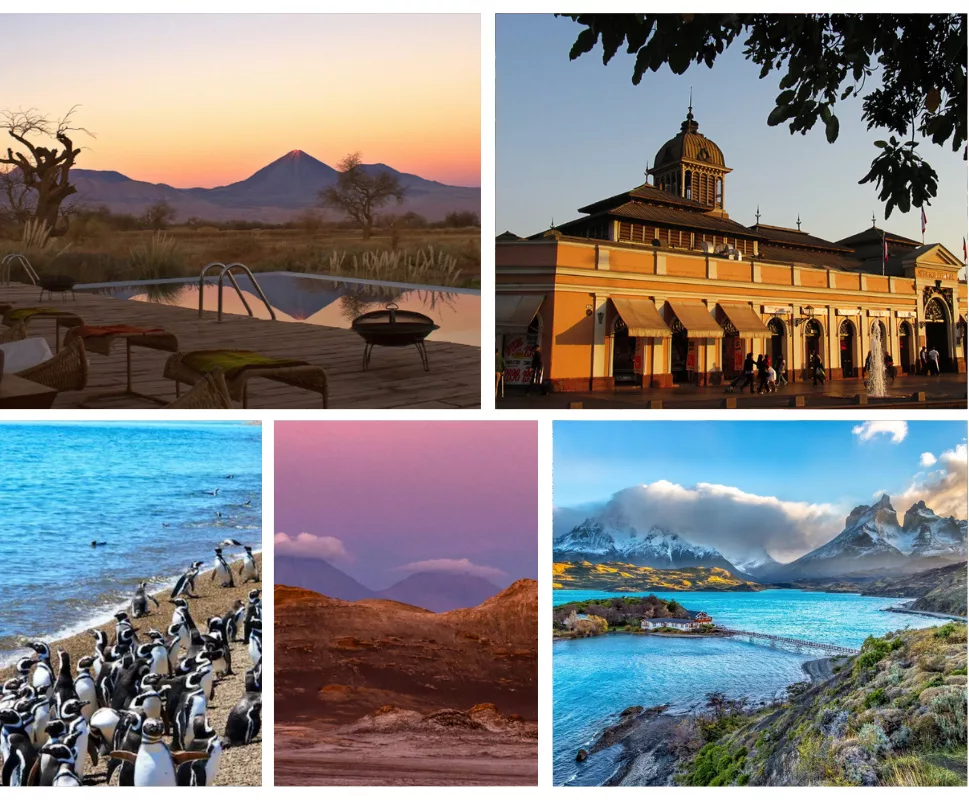
Chile has increasingly emphasized environmental accountability as a green tourism powerhouse in recent years. According to Chile Travel, 22% of Chile’s domestic territory is part of the National System of State Protected Wildlife Areas. The country encompasses 43 National Parks, 45 National Reserves, and 8 Natural Moments for the organic retreat you didn’t know you needed.
Star-gaze at El Valle de La Luna
Unusual sights of saline outcrops greet visitors to the Moon Valley. Located in the north of Chile’s Atacama desert, the valley provides day-time visitors with a truly out-of-this-world sight – with its pink and purple skies and dry lakes, it is perhaps no surprise that a prototype for a Mars rover was tested here. At night, open your eyes to the beauty of a phenomenon never seen in the bright lights of our big cities. Stars may glisten like jewels, but the sight is truly priceless.
Visit Torres del Paine National Park
With their dramatic stature, the peaks in Chile’s Torres del Paine National Park possess an almost unreal quality. They aren’t the only hallmark of this fantastical landscape, which hosts the world’s third-largest water reserve in the Southern Ice fields. Glaciers only cover 10% of the continents, so seeing them up close is a true privilege.
Stay at the Tierra Atacama Hotel
One of the first self-sufficient accommodations in South America, the Tierra Atacama Hotel relies exclusively on solar energy from the Atacama Desert. It runs its own solar plant with 588 photovoltaic panels, a high-efficiency lithium-ion battery system, and intelligent energy management with an unlimited supply. In what might best be described as a ‘fancy plants’ approach, the hotel also extracts 100% of its water from its own well and treats it through a reverse osmosis plant to avoid draining local resources.
Eat at the Mercado Central
If you find yourself in the Chilean capital Santiago, support local food vendors by spending the morning at this Mecca for fresh seafood. Chile is known for fresh seafood, including fish and shellfish offerings like oysters, scallops, razor clams, and more.
Bird-watch with BirdsChile
In 2016, “BirdsChile” was named Chile’s Most Sustainable Tour Company. The company promotes natural experiences across the vast country, such as birding and nature tours that contribute directly to local conservation. It also has a United Nations certification of emission reductions, reducing the equivalent of 5 tons of carbon dioxide per the UN standard through donating to worthy environmental causes. Tours range from a month-long extravaganza from north to south and a cultural experience that combines hiking and fishing villages to a search for the puma. And we’re not talking about the shoe.
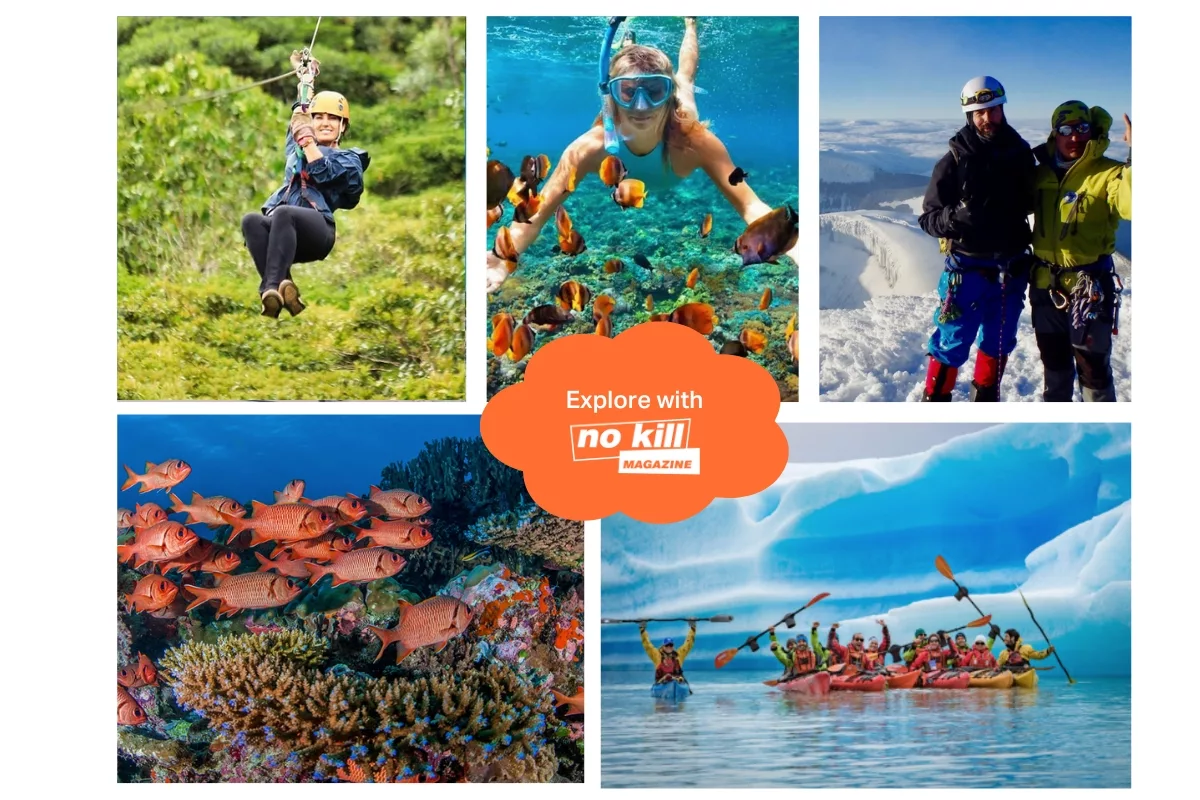
–Jayna Rohslau
Related Articles
Fiercely Protect Our Planet with These Essential Travel Tips
The Best Eco-Friendly + Sustainable Luggage Brands
Our Favorite Sun Hats from Responsible Brands






